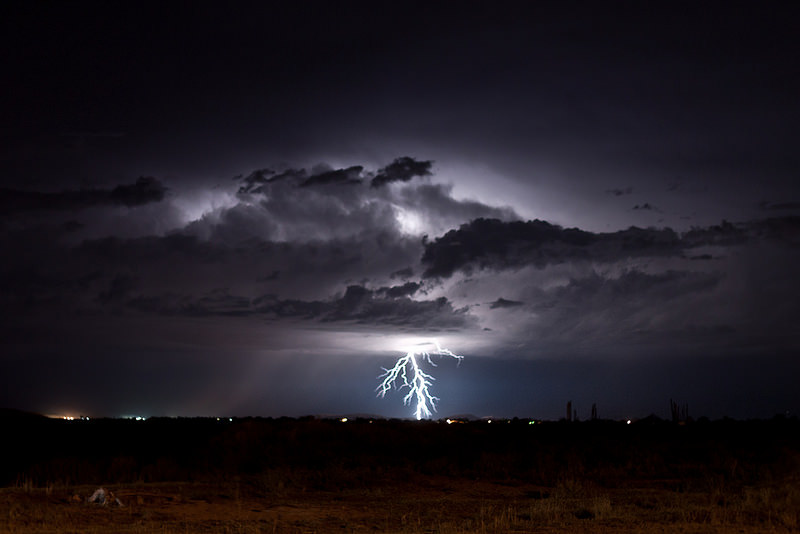
Antimatter — plentiful in science fiction — is a rare phenomenon in the real world and very difficult to create in a laboratory.
So when a researcher’s airplane made a wrong turn during a thunderstorm and flew straight into a mile-wide cloud, he was surprised to discover antimatter in their midst.
Dr. Joseph Dwyer and the crew spent long minutes trying to find their way out, and it was only after they cleared the storm clouds that the University of New Hampshire physicist was able to check his instruments and discover that he’d found antimatter in the thunderclouds.
When antimatter comes into contact with a particle of normal matter, the two wipe out each other, and it doesn’t stick around long enough for scientists to study it at length.
WATCH: Lightning Strikes Simultaneously on Tallest Chicago Towers: Caught on Film
Until now, scientists have only theorized that antimatter could exist in a thunderstorm – actually discovering it was nothing short of a major shock.
“This was so strange that we sat on this observation for several years,” Dwyer told the journal Nature. It took him nearly six years before going public with his discovery.
Dwyer is now chasing down antimatter by releasing weather balloons and planning more head-on flights into storms.
(WATCH the FermiLabs video about antimatter below) – Photo by O.S. Fisher, CC
Share this discovery with the nerds in your life…




















So what? The mass of an electron is only 0.511 MEV. That means that any particle impact of energy 2 * 0.511 MEV has is sufficient to create an electron-positron pair. Since voltages in lightning exceed a billion volts, it is hardly surprising that electron-positron pair creation occurs once in a while. In fact, even proton anti-proton pairs should show up once in a while. Then add cosmic rays of truly colossal energy, and it is hardly surprising to find anti-matter in the atmosphere.